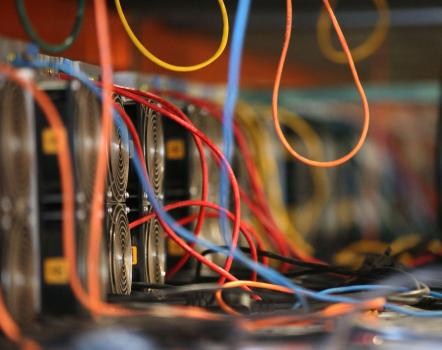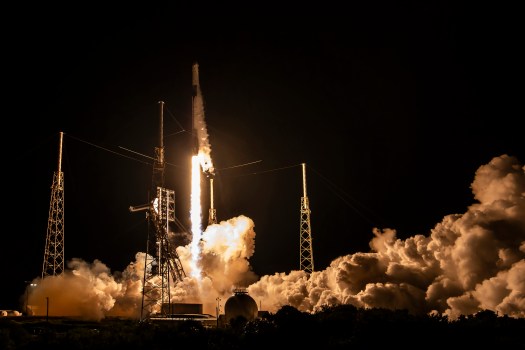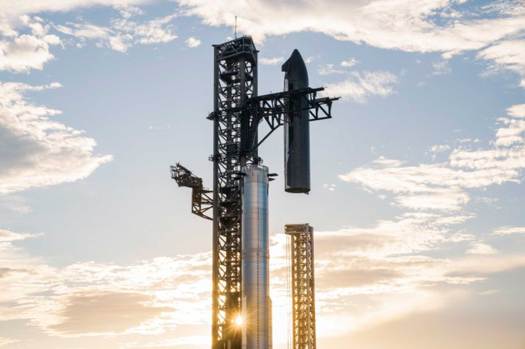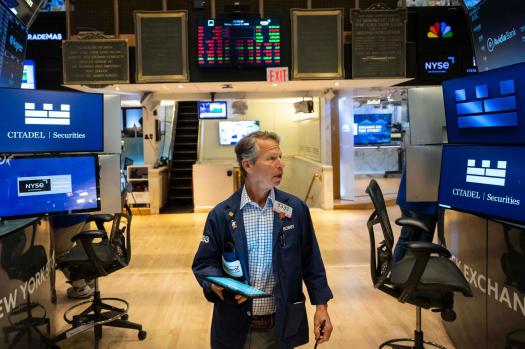By Bankrate.com’s Brian Baker, CFA
The process of producing new bitcoins through the solution of incredibly challenging mathematical puzzles that validate financial transactions is known as bitcoin mining. A fixed quantity of Bitcoin is awarded to the miner upon successful mining.
Related Articles
-
What to know about a potential deal to keep TikTok running in US
-
Epic Universe fuels epic May for Orange tourist-tax collections
-
Deals made by Trump since pausing his Liberation Day tariffs remain sparse
-
Go back to Haiti! Florida garbage company pays $1.4 million in racism lawsuit
-
Trump to put 25% tariffs on Japan and South Korea, new import taxes on five other nations
One of the most well-known varieties of cryptocurrencies—digital currencies that can only be exchanged online—is Bitcoin. Transactions in the cryptocurrency are tracked by a distributed ledger, which is a decentralized computer network that powers Bitcoin. New bitcoins are produced, or mined, when computers connected to the network validate and process transactions. The transaction is processed by these networked computers, often known as miners, in return for a Bitcoin payment.
It seems sense that interest in mining has increased as a result of the recent explosion in the value of cryptocurrencies, and Bitcoin in particular. As of mid-June 2025, a miner can receive 3.125 Bitcoin (about $334,375) for successfully validating a new block on the Bitcoin blockchain. However, because of its complexity and expensive cost, Bitcoin mining is not a good option for most people.
Here are some important things to know about the fundamentals of Bitcoin mining.
Blockchain, the technology underlying numerous cryptocurrencies, powers Bitcoin. A blockchain is a network’s decentralized ledger of all transactions. Computers on the network, referred to as miners, link groups of authorized transactions to make a block, which in turn forms a chain. Consider it a lengthy public document that serves as a kind of perpetual receipt. The process of adding a block to the chain is known as bitcoin mining.
To create a block on the blockchain, bitcoin miners select transactions from a mempool, which is a collection of unconfirmed transactions. Miners must guess a number, also known as a nonce, in order to solve what is known as a proof-of-work puzzle before they can safely add the block to the blockchain. Together with the block’s data, this number is analyzed using a method known as SHA-256.
Creating a block hash—a code with enough leading zeros to be less than or equal to the network’s target hash—is the ultimate objective. The difficulty of solving the puzzle is determined by the goal hash.
Target hash example:0000000000000000ffff00000000000000000000000000000000000000000000
An example of a block hash is 0000000000000000057e29f1b57c1a9d5b90a6b7f1b4f0c9e2b0a1d3e4f5c6d7.
Keep in mind that the target hash and the block hash must be equal or less. Consider it similar to a dice game in which you can only win if you roll a number that is less than or equal to a starting number. You would need to roll a hash with a ton of zeros in front of it in order large win because that number is primarily made up of zeros. In this case, the riddle is solved because the block hash is smaller than the goal hash, which in this case indicates non-zero values.
You’re right if you’re wondering if this method takes a lot of processing power. Miners make billions or trillions of estimates on which nonces might work using incredibly powerful computers known as ASICs. The price of a single computer can reach $10,000. Additionally, ASICs use a lot of electricity, which has angered environmental organizations and reduced miners’ income. In theory, however, you could mine Bitcoin using, say, a MacBook Pro, but you won’t get very far owing of the lack of processing power.
A miner will get 3.125 bitcoins if they are successful in adding a block to the network. Approximately every four years, or every 210,000 blocks, the award amount is halved. 3.125 bitcoins were valued $334,375 as of mid-June 2025, when the price of the cryptocurrency was approximately $107,000.
- Regulation: Very few governments have embraced cryptocurrencies such as Bitcoin, and many are more likely to view them skeptically because the currencies operate outside government control. There is always the risk that governments could outlaw the mining of Bitcoin or cryptocurrencies altogether as China did in 2021, citing financial risks and increased speculative trading.
- Price volatility: Bitcoin s price has fluctuated widely since it was introduced in 2009. Since just January 2023, Bitcoin has at times traded for less than $18,000 and more than $110,000 recently. This kind of volatility makes it difficult for miners to know if their reward will outweigh the high costs of mining.
These are the essential elements required to begin mining Bitcoin.
Any Bitcoin that you generate from mining will be kept here. You may store, send, and receive Bitcoin and other cryptocurrencies via an encrypted online account called Awallet. Crypto wallet alternatives are provided by companies like Coinbase, Trezor, and Exodus.
Numerous companies offer mining software, many of which are available for free download and compatible with both Mac and Windows machines. You will be able to mine Bitcoin after the program is linked to the required hardware.
Hardware is the most expensive component of Bitcoin mining. To mine Bitcoin successfully, you’ll need a powerful computer that consumes a lot of electricity. It is not unusual for the hardware to cost at least $10,000.
- Creating Bitcoin consumes 184.4 terawatt-hours of electricity each year, more than is used by Poland or Egypt, according to the Cambridge Bitcoin Electricity Consumption Index.
- The price of Bitcoin has been extremely volatile over time. In 2020, it traded as low as $4,107 and reached an all-time high of $111,970 in May 2025. As of mid-June, it traded around $107,000.
- The United States (37.8%), Mainland China (21.1%) and Kazakhstan (13.2%) were the largest bitcoin miners as of December 2021, according to the Cambridge Electricity Consumption Index.
It’s crucial to keep in mind how taxes may affect Bitcoin mining. Since cryptocurrency asset prices have skyrocketed in recent years, the IRS has been attempting to crack down on cryptocurrency owners and traders. These are the main tax factors that Bitcoin miners need to be aware of.
- Are you a business? If Bitcoin mining is your business, you may be able to deduct expenses you incur for tax purposes. Revenue would be the value of the bitcoins you earn. But if mining is a hobby for you, it s not likely you ll be able to deduct expenses.
- Mined bitcoin is income. If you re successfully able to mine Bitcoin or other cryptocurrencies, the fair market value of the currencies at the time of receipt will be taxed at ordinary income rates.
- Capital gains. If you sell bitcoins at a price above where you received them, that qualifies as a capital gain, which would be taxed the same way it would for traditional assets such as stocks or bonds.
Learn about the fundamental tax laws governing Bitcoin, Ethereum, and other cryptocurrencies by visiting Bankrate’s cryptocurrency tax guide.
It varies. The hefty initial equipment expenses and continuous electricity expenditures make it uncertain whether Bitcoin miners’ efforts will turn a profit, even if they are successful.
According to the University of Cambridge’s Bitcoin Electricity Consumption Index, the global electricity consumption of bitcoin mining surpasses that of Poland, a country with 36.7 million citizens.
The amount of processing power needed to mine Bitcoin has increased along with its complexity and difficulty. According to the Cambridge index, bitcoin mining uses more electricity annually—roughly 184.4 terawatt-hours—than most other nations.
Joining a mining pool is one way to split the hefty expenses of mining. Pools enable miners to increase their capabilities and share resources, but as shared resources entail shared rewards, working through a pool reduces the potential payment. It’s also challenging to determine precisely how much you’re working for because of the price fluctuation of Bitcoin.
Bitcoin mining may sound exciting, but in practice, it’s costly and challenging to do so well. Uncertainty is increased by the price of Bitcoin’s high volatility.
Remember that Bitcoin is a speculative asset that has no inherent worth, meaning it isn’t correlated with gold or anything else and won’t provide any income for its owner. Selling it to someone else for a greater price is what will provide you your return, but that price might not be high enough for you to make money.
(Logan Jacoby of Bankrate helped to update this article.)
Bankrate.com, 2025. Tribune Content Agency, LLC is the distributor.












